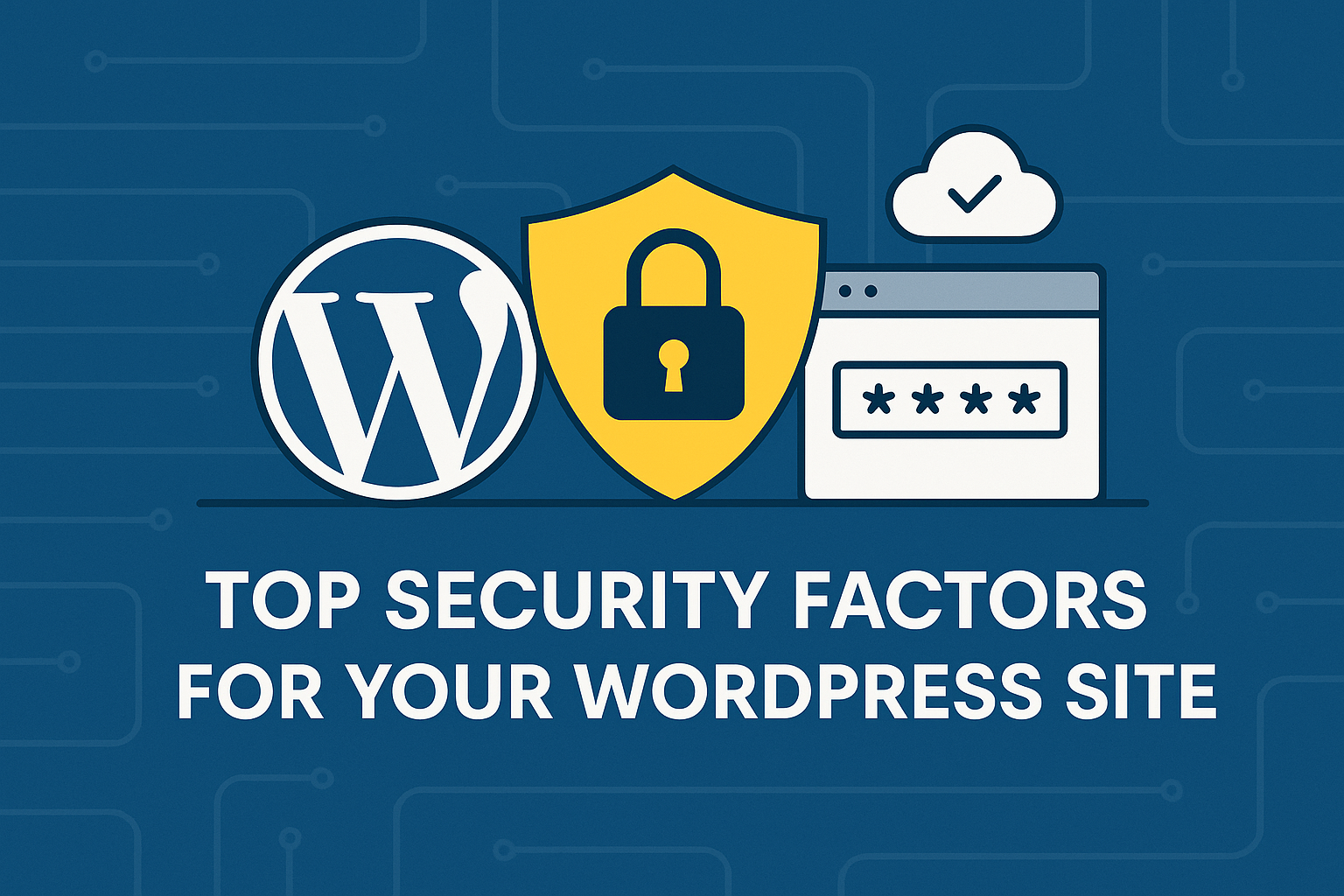Top Security Factors for Your WordPress Site

Senior WebCoder

WordPress powers over 40% of all websites — and that popularity also makes it a prime target for cyberattacks. Whether you’re running a blog, business site, or eCommerce store, security should be a top priority.
Here are the key security factors every WordPress site owner must consider to keep their site safe and sound.
1. Use Strong Login Credentials
Weak usernames and passwords are among the most common entry points for hackers.
What to do:
- Avoid using
adminas your username. - Use a strong password: a mix of upper/lowercase, numbers, and symbols.
- Enable two-factor authentication (2FA) for an extra layer of security.
2. Keep WordPress Core, Themes, and Plugins Updated
Outdated code is a major vulnerability.
What to do:
- Enable auto-updates for minor core releases.
- Regularly update plugins and themes.
- Delete unused or abandoned plugins.
Pro Tip: Only use trusted themes/plugins from the official WordPress repository or verified developers.
3. Install a Security Plugin
A good security plugin can automate many protection tasks.
Recommended Plugins:
- Wordfence
- Sucuri
- iThemes Security
These plugins offer features like firewall protection, malware scanning, and login attempt limits.
4. Use SSL (HTTPS)
SSL encrypts data between your users and your server.
Why it matters:
- Protects sensitive data like passwords and form entries
- Boosts SEO rankings (Google prefers HTTPS)
- Builds user trust
Most hosts offer free SSL via Let’s Encrypt — make sure it’s installed and active.
5. Limit Login Attempts
By default, WordPress allows unlimited login attempts — a risk for brute-force attacks.
How to fix:
Use a plugin like Limit Login Attempts Reloaded or configure it in a security suite to block repeated failed attempts.
6. Regular Backups
No security setup is complete without backups.
What to do:
- Use plugins like UpdraftPlus, BackupBuddy, or Jetpack.
- Store backups offsite (Dropbox, Google Drive, S3, etc.)
- Schedule automatic daily or weekly backups
7. Hide WordPress Version and Sensitive Info
Exposing your WordPress version can help attackers target known vulnerabilities.
Suggestions:
- Remove version number from source code
- Hide readme.html and license.txt files
- Use a plugin or theme functions to hide REST API endpoints if not needed
8. Scan for Malware & Vulnerabilities
Periodic scans help detect hidden malware or file changes.
Options:
- Run scans through your security plugin
- Use external services like VirusTotal, Sucuri SiteCheck, or MalCare
9. Secure wp-config.php and .htaccess
Your wp-config.php file contains sensitive database credentials.
Tips:
- Move
wp-config.phpone directory level above your root - Restrict access to
.htaccessandwp-config.phpvia file permissions - Add code to
.htaccessto deny direct access:
<files wp-config.php>
order allow,deny
deny from all
</files>10. Choose a Secure Hosting Provider
Your hosting environment has a direct impact on the overall security of your WordPress site. A poor hosting setup can leave you vulnerable no matter how secure your site configuration is.
What to Look For:
-Built-in firewalls to block malicious traffic
-Automated daily backups with offsite storage
-Malware monitoring and cleanup support
-24/7 technical support
-Isolated account architecture, especially on shared hosting plans
Trusted hosts include Kinsta, SiteGround, and WP Engine — known for their proactive security features and strong uptime guarantees.
Final Thoughts
Website security isn't a one-time task — it's a continuous commitment. By implementing these best practices for your WordPress site, you significantly reduce your risk of being hacked, defaced, or compromised.
Start with the basics:
- Use strong login credentials
- Keep your core, themes, and plugins updated
- Set up regular backups
Then, level up with:
- Firewalls
- Malware scanners
- Secure hosting
A secure site builds trust, protects data, and keeps your business running smoothly.
